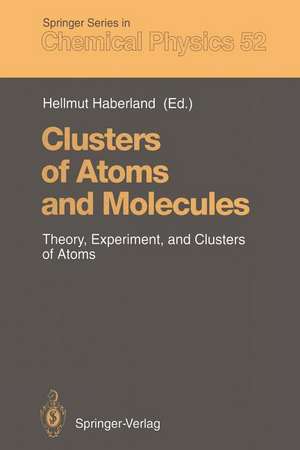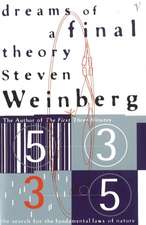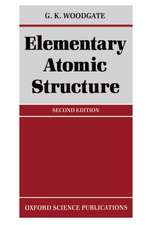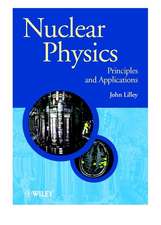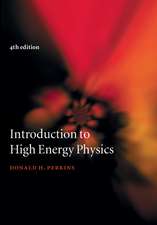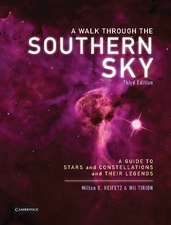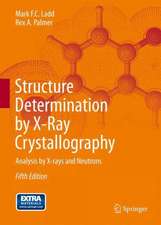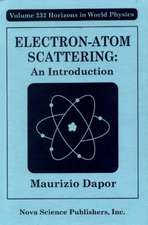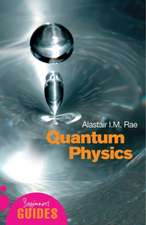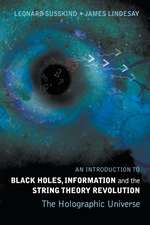Clusters of Atoms and Molecules: Theory, Experiment, and Clusters of Atoms: Springer Series in Chemical Physics, cartea 52
Editat de Hellmut Haberlanden Limba Engleză Paperback – 8 dec 2011
Din seria Springer Series in Chemical Physics
- 20%
 Preț: 585.30 lei
Preț: 585.30 lei - 15%
 Preț: 643.00 lei
Preț: 643.00 lei - 15%
 Preț: 635.96 lei
Preț: 635.96 lei - 18%
 Preț: 953.03 lei
Preț: 953.03 lei - 15%
 Preț: 644.63 lei
Preț: 644.63 lei - 15%
 Preț: 638.43 lei
Preț: 638.43 lei - 15%
 Preț: 649.22 lei
Preț: 649.22 lei - 15%
 Preț: 647.40 lei
Preț: 647.40 lei - 15%
 Preț: 638.89 lei
Preț: 638.89 lei - 15%
 Preț: 652.31 lei
Preț: 652.31 lei - 15%
 Preț: 638.43 lei
Preț: 638.43 lei - 15%
 Preț: 637.13 lei
Preț: 637.13 lei - 18%
 Preț: 952.57 lei
Preț: 952.57 lei - 18%
 Preț: 947.85 lei
Preț: 947.85 lei - 15%
 Preț: 636.45 lei
Preț: 636.45 lei - 15%
 Preț: 649.87 lei
Preț: 649.87 lei - 18%
 Preț: 953.65 lei
Preț: 953.65 lei - 18%
 Preț: 894.03 lei
Preț: 894.03 lei - 15%
 Preț: 647.27 lei
Preț: 647.27 lei - 18%
 Preț: 1249.00 lei
Preț: 1249.00 lei - 15%
 Preț: 646.30 lei
Preț: 646.30 lei - 18%
 Preț: 954.14 lei
Preț: 954.14 lei - 24%
 Preț: 1226.82 lei
Preț: 1226.82 lei - 18%
 Preț: 961.72 lei
Preț: 961.72 lei - 18%
 Preț: 1002.31 lei
Preț: 1002.31 lei - 24%
 Preț: 647.25 lei
Preț: 647.25 lei - 18%
 Preț: 888.49 lei
Preț: 888.49 lei - 18%
 Preț: 908.04 lei
Preț: 908.04 lei - 15%
 Preț: 641.38 lei
Preț: 641.38 lei - 15%
 Preț: 585.40 lei
Preț: 585.40 lei - 15%
 Preț: 639.90 lei
Preț: 639.90 lei - 18%
 Preț: 897.02 lei
Preț: 897.02 lei
Preț: 647.59 lei
Preț vechi: 761.87 lei
-15% Nou
Puncte Express: 971
Preț estimativ în valută:
123.96€ • 134.69$ • 104.19£
123.96€ • 134.69$ • 104.19£
Carte tipărită la comandă
Livrare economică 21 aprilie-05 mai
Preluare comenzi: 021 569.72.76
Specificații
ISBN-13: 9783642843310
ISBN-10: 364284331X
Pagini: 444
Ilustrații: XIV, 422 p.
Dimensiuni: 155 x 235 x 23 mm
Greutate: 0.62 kg
Ediția:Softcover reprint of the original 1st ed. 1994
Editura: Springer Berlin, Heidelberg
Colecția Springer
Seria Springer Series in Chemical Physics
Locul publicării:Berlin, Heidelberg, Germany
ISBN-10: 364284331X
Pagini: 444
Ilustrații: XIV, 422 p.
Dimensiuni: 155 x 235 x 23 mm
Greutate: 0.62 kg
Ediția:Softcover reprint of the original 1st ed. 1994
Editura: Springer Berlin, Heidelberg
Colecția Springer
Seria Springer Series in Chemical Physics
Locul publicării:Berlin, Heidelberg, Germany
Public țintă
ResearchCuprins
1 Introduction.- 1.1 What are Clusters?.- 1.2 What Makes Clusters Interesting?.- 1.3 How Does One Make Clusters?.- 1.4 Experiments with Clusters.- 1.5 Experiments Not Possible Today.- 1.6 Cluster, Tantalizing Subjects for Theoretical Studies.- 1.7 Clusters Make New Kinds of Materials.- 1.8 New Chemistry.- 1.9 Outlook.- 2 Theoretical Concepts.- 2.1 Quantum Chemistry of Clusters.- References.- 2.2 Tight-Binding and Hückel Models of Molecular Clusters.- References.- 2.3 Density Functional Calculations for Clusters.- References.- 2.4 Transition from van der Waals to Metallic Bonding in Clusters.- Appendix A: Slave-Boson Approach to Electron Correlations in Small Clusters.- Appendix B: On the Size Dependence of the Ionization Energy of Small Clusters.- References.- 2.5 Analytic Cluster Models and Interpolation Formulae for Cluster Properties.- References.- 2.6 Shell Structure in Atoms, Nuclei and in Metals Clusters.- References.- 2.7 Introduction to Statistical Reaction Rate Theories.- References.- 2.8 Melting and Freezing of Clusters: How They Happen and What They Mean.- References.- 3 Experimental Methods.- 3.1 Sources.- 3.2 Detection of Cluster Ions.- 3.3 Electron Diffraction.- 3.4 Methods for the Production of (Nearly) Mass Selected Neutral Cluster Beams.- 3.5 Mass Spectrometers.- 3.6 Optical Spectroscopy.- 3.7 Infrared Spectroscopy.- 3.8 Photo Electron Spectroscopy.- 3.9 Recent Developments.- References.- 4 Across the Periodic Table.- 4.1 Alkali Clusters.- References.- 4.2 Clusters of s2p1 Metals and Semiconductors.- References.- 4.3 Transition Metal Clusters: Physical Properties.- References.- 4.4 Carbon Clusters.- References.- 4.5 Oxides and Halides of Alkali Metals.- References.- 4.6 Rare Gas Clusters.- References.- 4.7 Neutral Molecular Clusters.- References.
Textul de pe ultima copertă
Clusters of Atoms and Molecules is devoted to theoretical concepts and experimental techniques important in the rapidly expanding field of cluster science. Cluster properties are dicussed for clusteres composed of alkali metals, semiconductors, transition metals, carbon, oxides and halides of alkali metals, rare gases, and neutral molecules. The book is composed of several well-integrated treatments all prepared by experts. Each contribution starts out as simple as possible and ends with the latest results so that the book can serve as a text for a course, an introduction into the field, or as a reference book for the expert.
